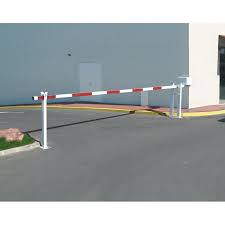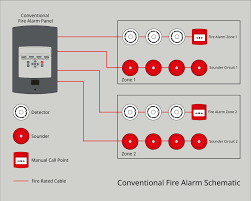Access control refers to the practice of managing and regulating who has access to certain areas or resources within a building or organization. It is an essential aspect of security management, as it helps to prevent unauthorized access and protect sensitive information or assets.
There are several types of access control systems, including physical, electronic, and logical. Physical access control involves the use of locks, keys, and other physical barriers to restrict entry to certain areas. Electronic access control systems use technology such as keycards, biometric scanners, and PIN codes to regulate access. Logical access control is used in computer systems and networks to manage user privileges and restrict unauthorized access to data.
One of the primary benefits of access control is that it allows organizations to limit access to sensitive areas or information only to those who need it. This helps to prevent theft, sabotage, or espionage by outsiders or employees who may have malicious intentions. Access control can also help organizations comply with regulatory requirements related to data protection and privacy.
Access control systems can be customized according to the needs of different organizations. For example, some companies may require a high level of security for their data centers or research labs, while others may only need basic security measures for their offices or retail stores. Access control systems can also be integrated with other security technologies such as CCTV cameras and intrusion detection systems for added protection.
In addition to providing security benefits, access control can also improve operational efficiency by streamlining processes such as employee onboarding and offboarding. With an electronic access control system in place, organizations can easily grant or revoke permissions for employees based on their roles and responsibilities.
Overall, access control is an essential aspect of modern security management that helps organizations protect their assets and information from unauthorized access. By implementing an effective access control system tailored to their specific needs, businesses can ensure that only authorized personnel have access to sensitive areas or resources within their organization.
Frequently Asked Questions About Access Control: Types, Uses, and Examples
- Why access control?
- What are the 3 types of access control?
- What is used for access control?
- What is access control with example?
Why access control?
Access control is essential for ensuring the security and safety of people, assets, and information within an organization or building. Here are some reasons why access control is important:
- Prevent unauthorized access: Access control helps to prevent unauthorized access to sensitive areas or resources within an organization. This can include physical areas such as data centers, research labs, or storage rooms, as well as digital resources such as computer networks and databases.
- Protect against theft and sabotage: By limiting access to sensitive areas or information only to those who need it, access control can help prevent theft, sabotage, or espionage by outsiders or employees who may have malicious intentions.
- Comply with regulations: Many industries are subject to regulatory requirements related to data protection and privacy. Access control can help organizations comply with these regulations by ensuring that only authorized personnel have access to sensitive information.
- Improve operational efficiency: With an electronic access control system in place, organizations can easily grant or revoke permissions for employees based on their roles and responsibilities. This can help streamline processes such as employee onboarding and offboarding.
- Integration with other security technologies: Access control systems can be integrated with other security technologies such as CCTV cameras and intrusion detection systems for added protection.
Overall, access control is important for maintaining a secure environment within an organization or building. By implementing an effective access control system tailored to their specific needs, businesses can ensure that only authorized personnel have access to sensitive areas or resources within their organization while improving operational efficiency and complying with regulations.
What are the 3 types of access control?
The three types of access control are:
Physical access control: This type of access control involves the use of physical barriers such as locks, gates, and fences to restrict entry to a particular area or resource. Physical access control can also include security personnel who monitor and regulate entry to a building or facility.
Electronic access control: This type of access control uses electronic devices such as keycards, biometric readers, and PIN codes to regulate entry to a particular area or resource. Electronic access control systems can be integrated with other security technologies such as CCTV cameras and intrusion detection systems for added protection.
3. Logical access control: This type of access control is used in computer systems and networks to manage user privileges and restrict unauthorized access to data. Logical access control can involve the use of passwords, encryption, and firewalls to protect sensitive information from unauthorized users.
What is used for access control?
There are several technologies and methods used for access control, including:
- Physical keys and locks: Traditional locks and keys can be used to control access to physical spaces.
- Keycards: Keycards are electronic cards that are swiped or tapped on a reader to grant access to a specific area.
- Biometric scanners: Biometric scanners use unique biological traits such as fingerprints, facial recognition, or iris scans to authenticate users and grant access.
- PIN codes: PIN codes are numeric passwords that can be entered into a keypad or touchscreen to grant access.
- Proximity sensors: Proximity sensors detect the presence of an authorized keycard or other device in close proximity to a reader, automatically granting access.
- Mobile devices: Mobile devices can be used for access control by using apps that allow users to unlock doors or gates remotely.
- Smart cards: Smart cards contain microchips that store information about the user and can be used for authentication and access control.
- Radio-frequency identification (RFID): RFID technology uses radio waves to communicate between a reader and a small chip embedded in an ID card or other device, granting access when the chip is detected.
- Voice recognition: Voice recognition technology uses spoken commands or phrases as a means of authentication and access control.
These technologies can be used individually or in combination with each other depending on the needs of the organization and the level of security required for different areas or resources within the organization.
What is access control with example?
Access control is the practice of regulating and managing who has access to certain areas or resources within an organization. An example of access control is a keycard system used in an office building. The keycard system restricts access to certain floors or areas of the building only to those who have a valid keycard. Employees are given keycards that are programmed to grant access only to the areas they need for their job responsibilities. This ensures that sensitive information or assets are protected from unauthorized access, and helps prevent theft, sabotage, or espionage by outsiders or employees who may have malicious intentions. Another example of access control is a biometric scanner used to authenticate users before granting them access to a secure facility or data center. The scanner may use fingerprint recognition, facial recognition, or other biometric data to ensure that only authorized personnel can enter the facility or access sensitive data.




